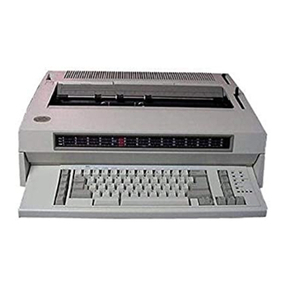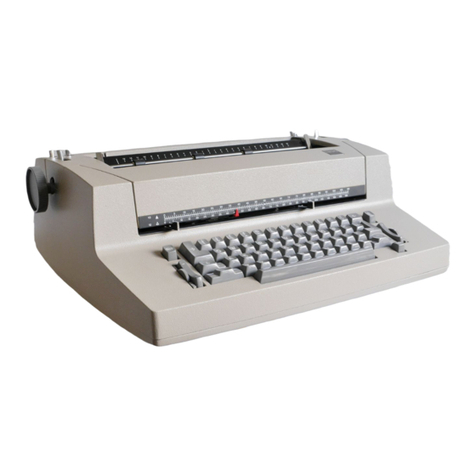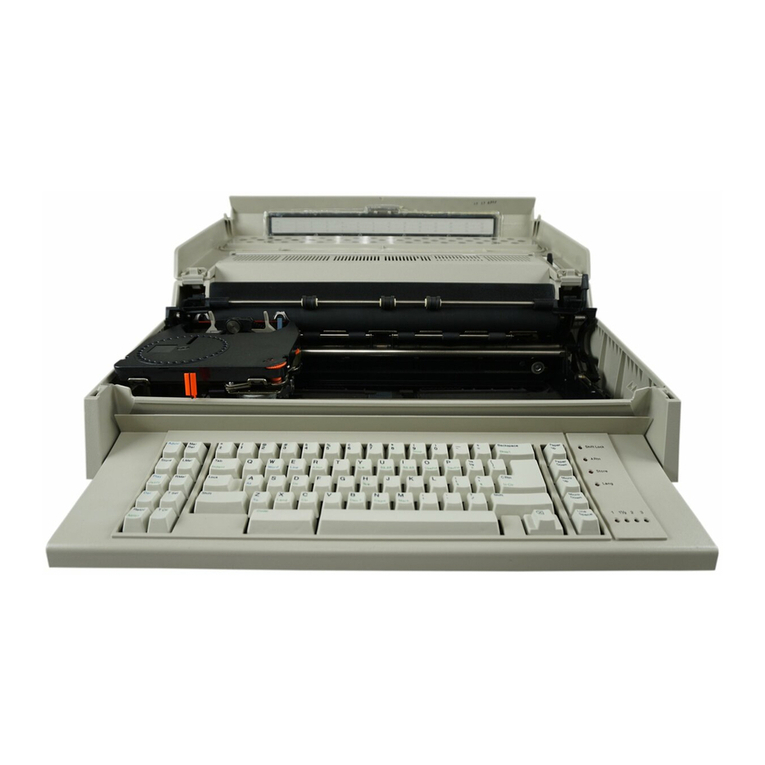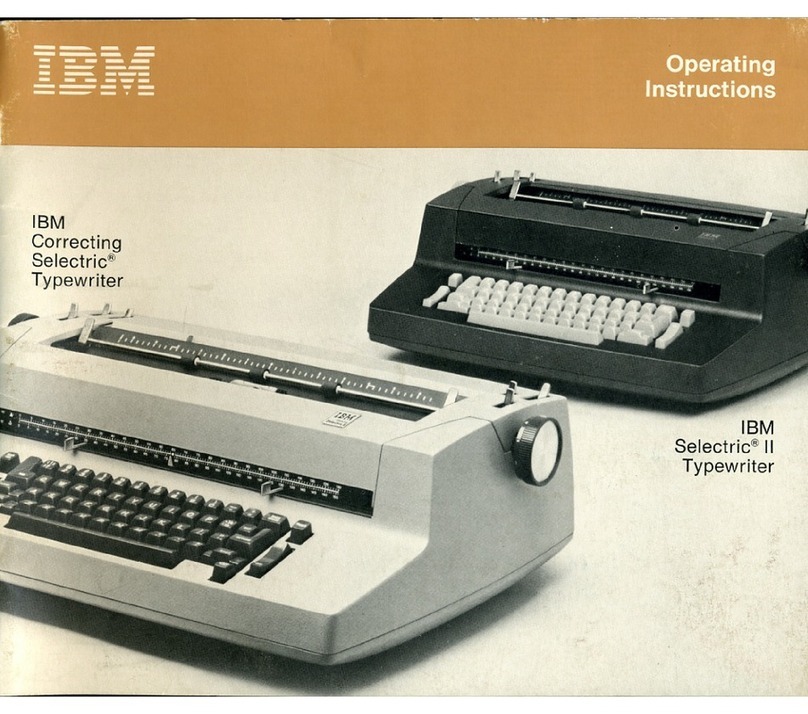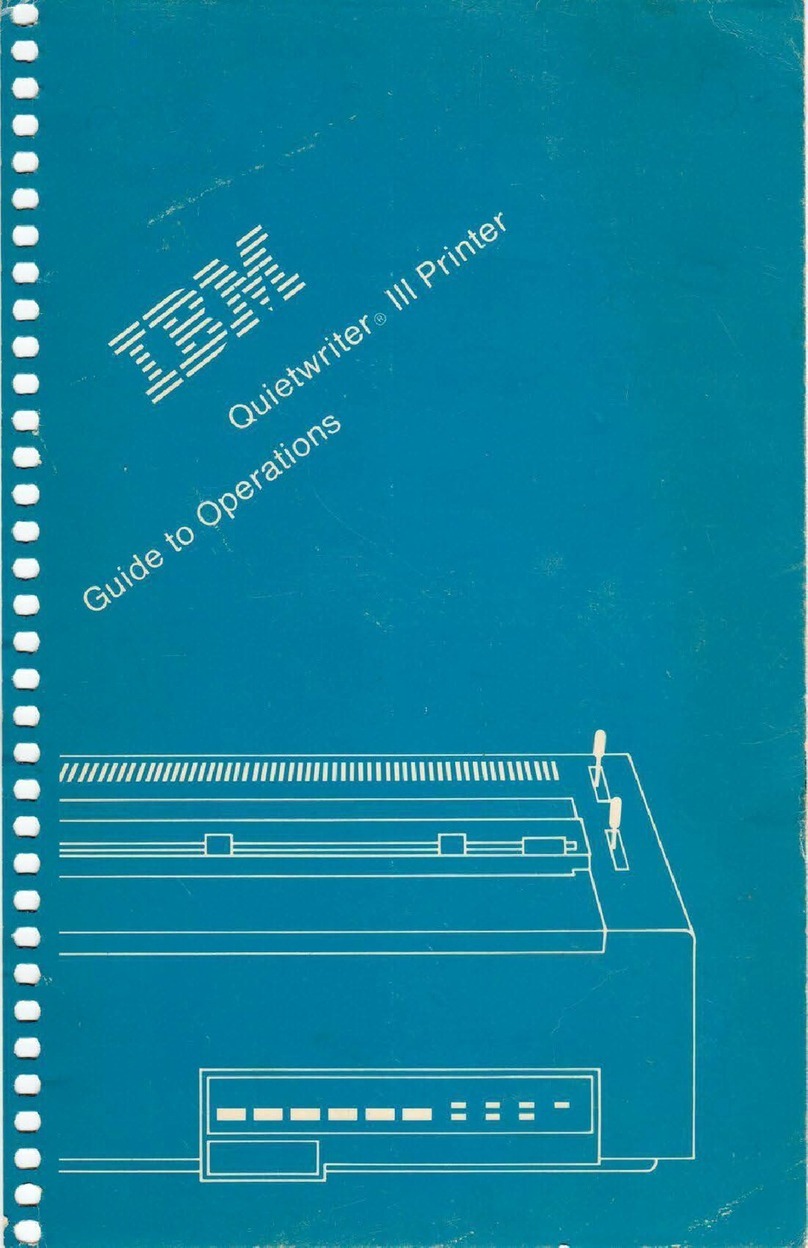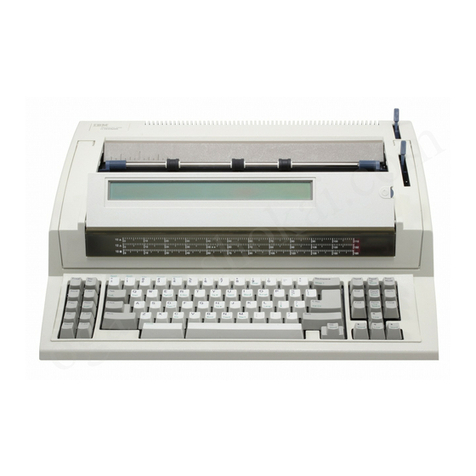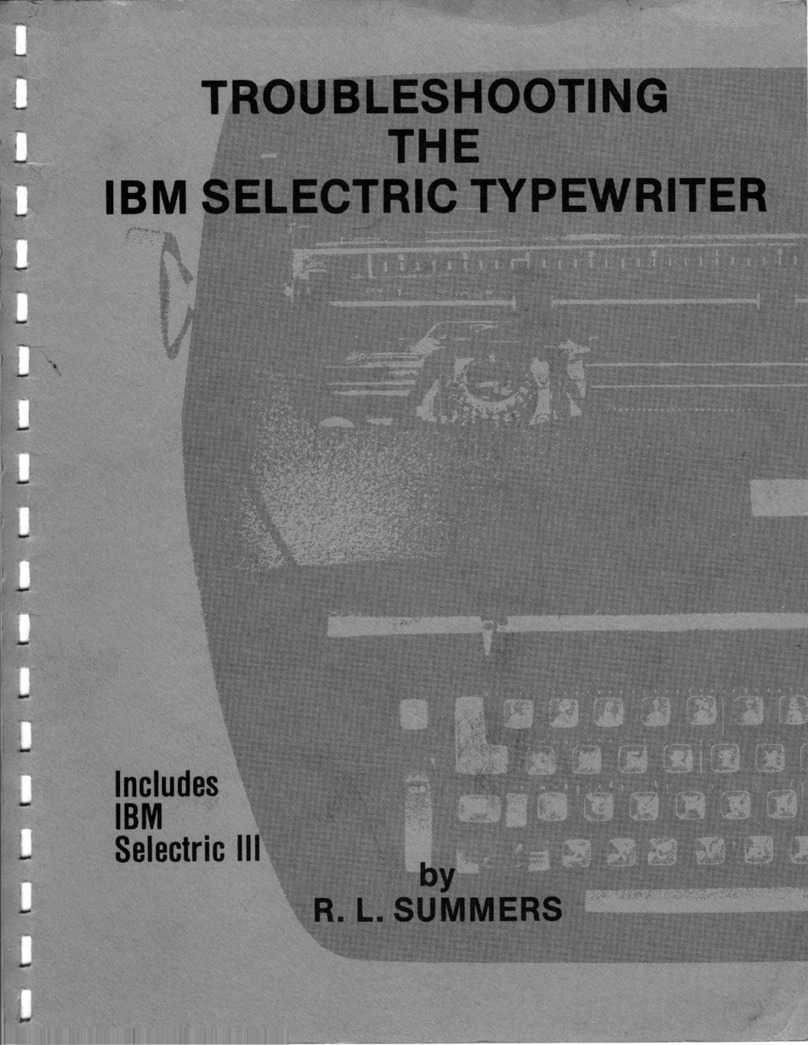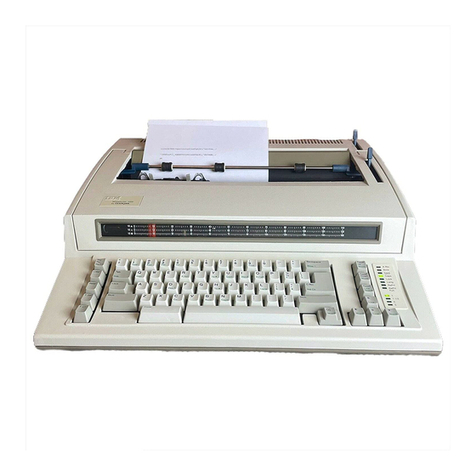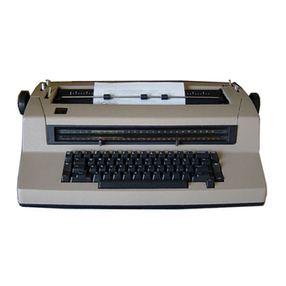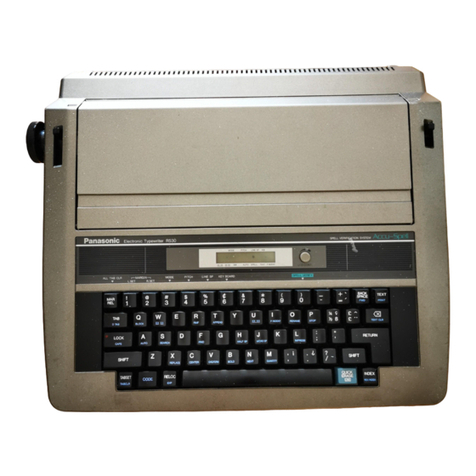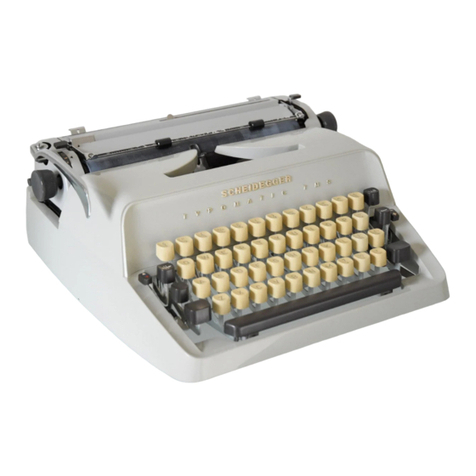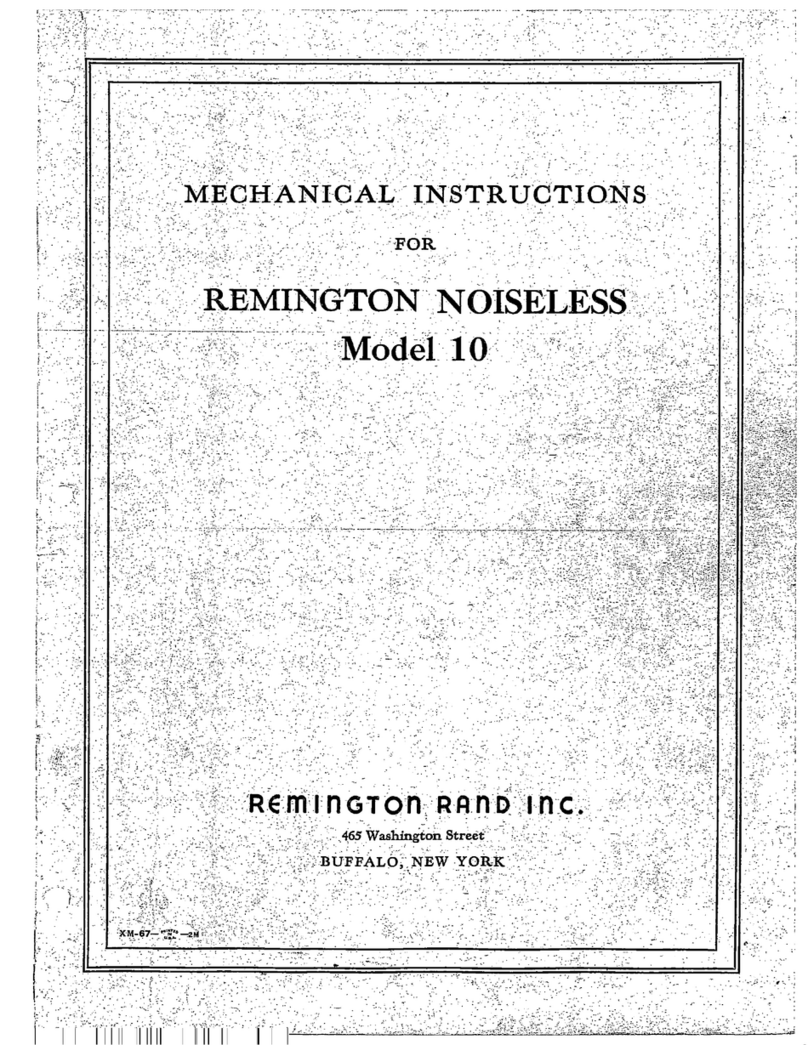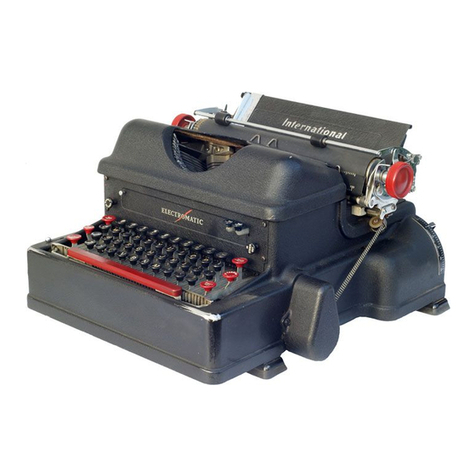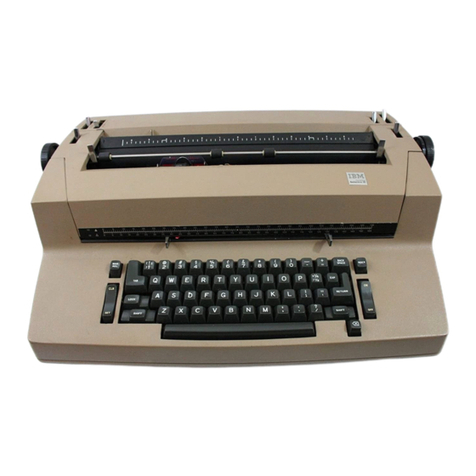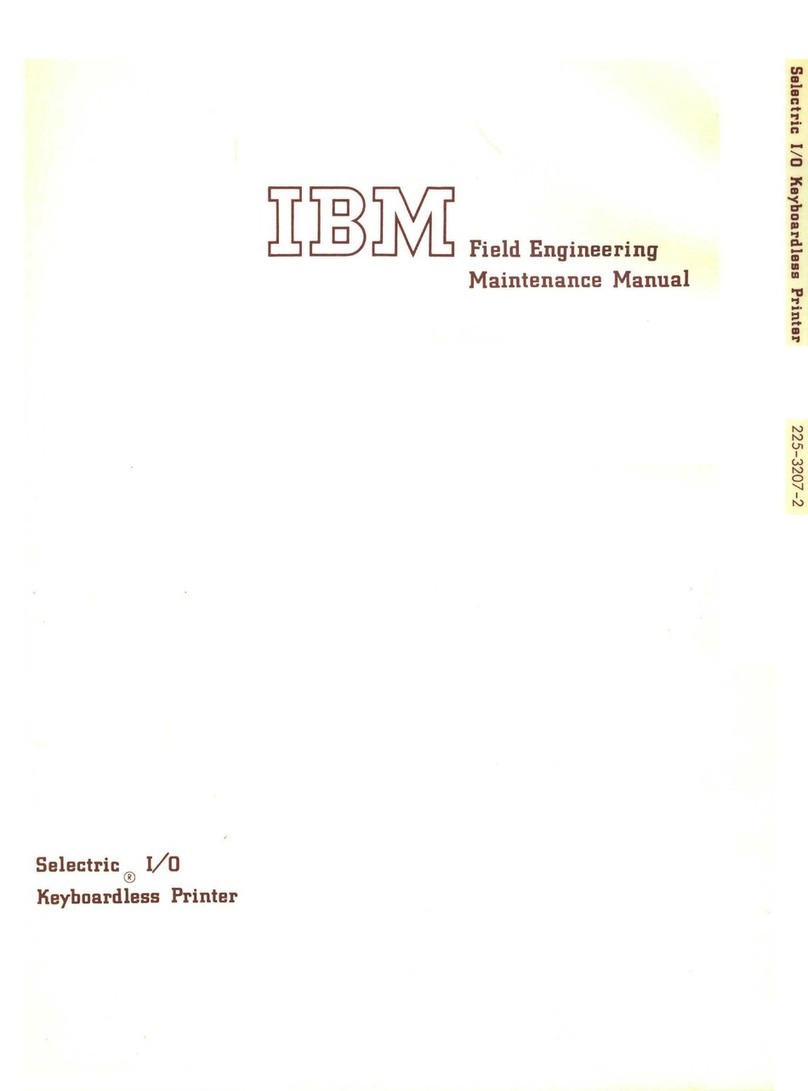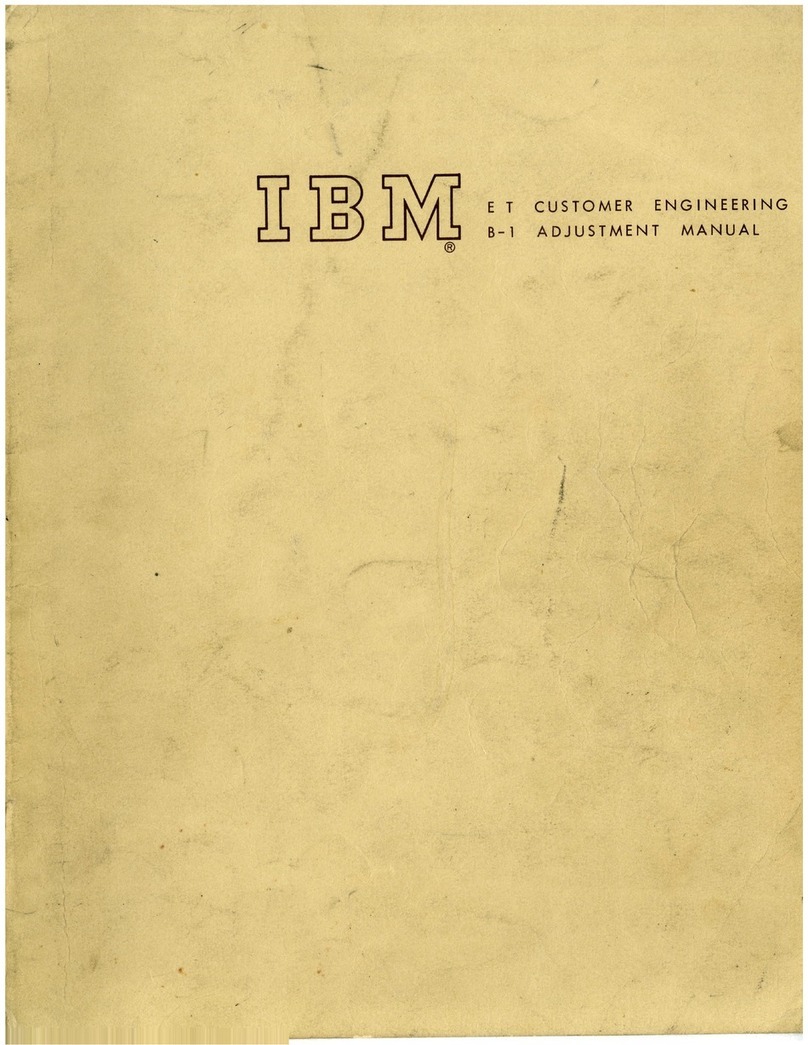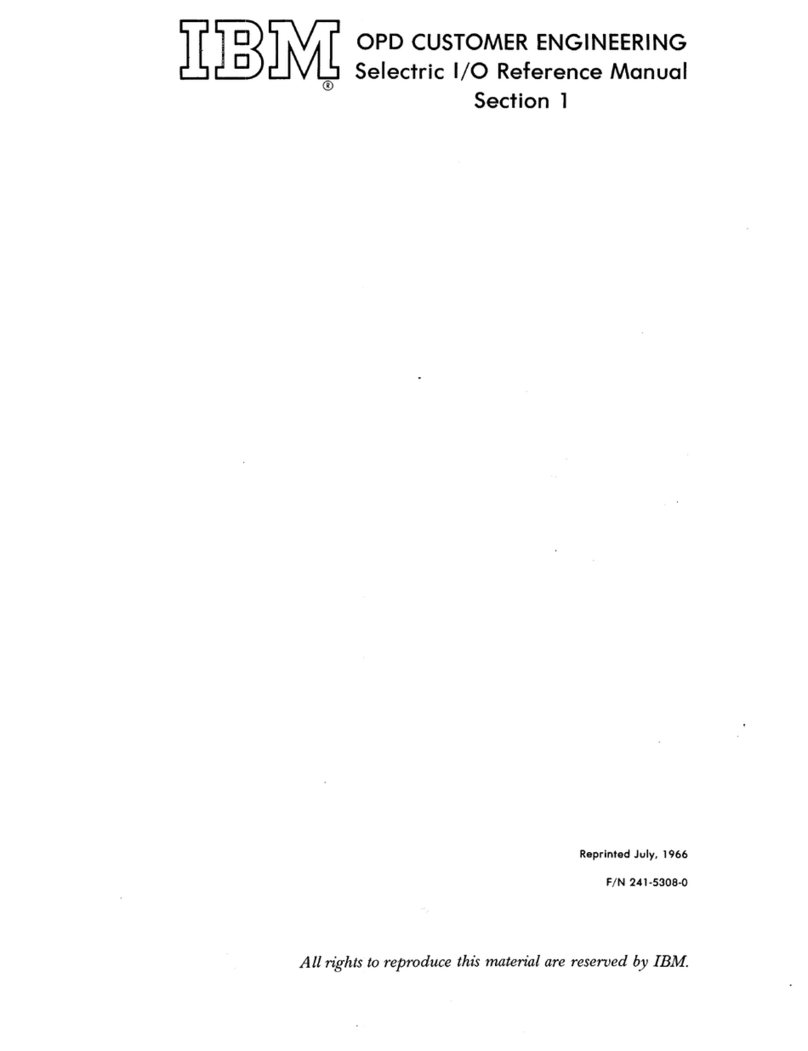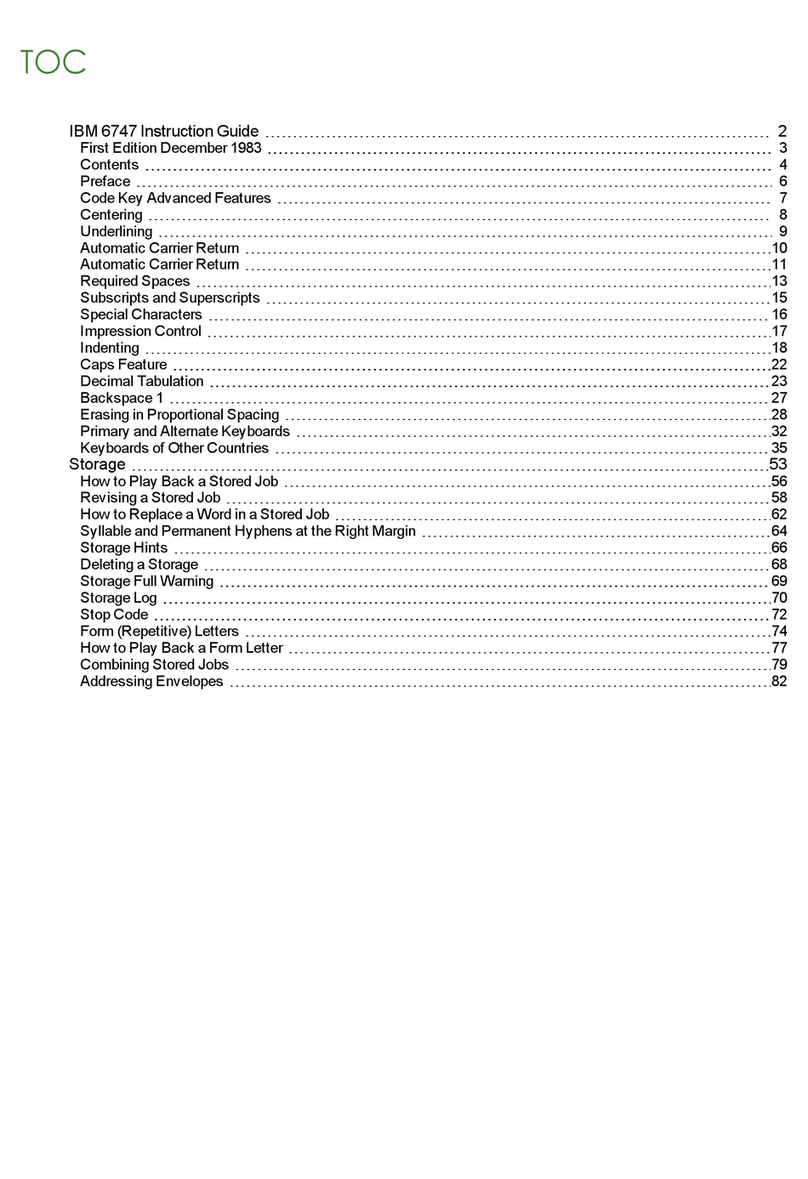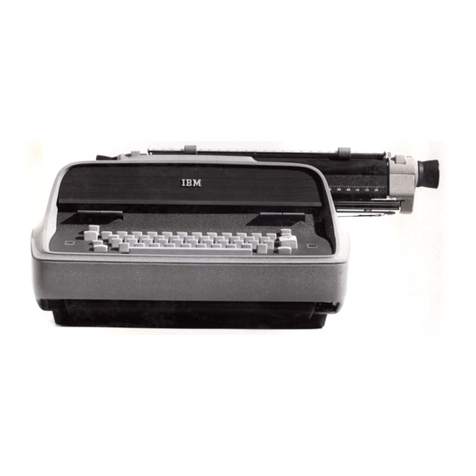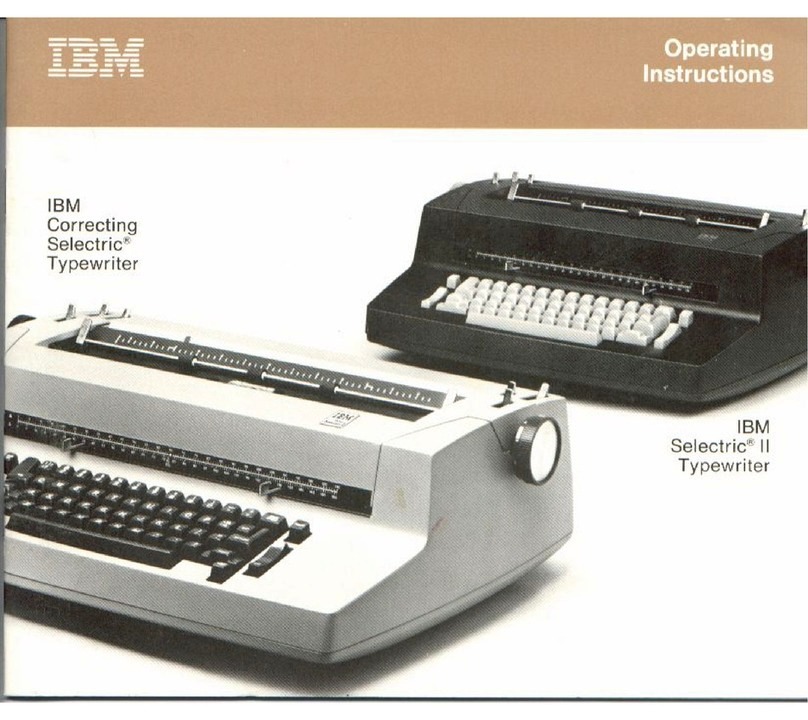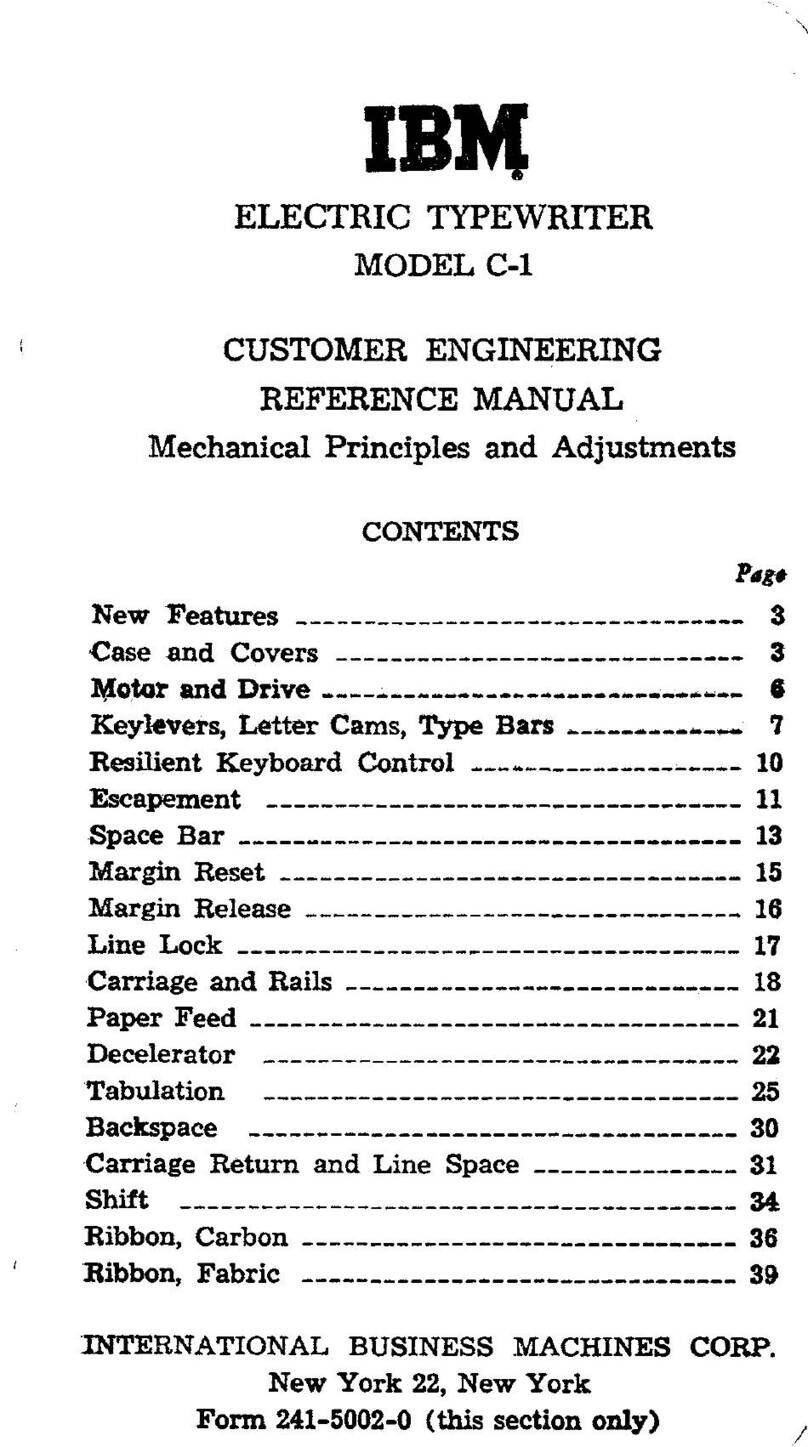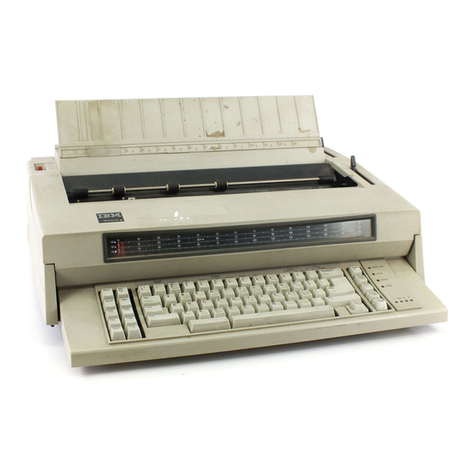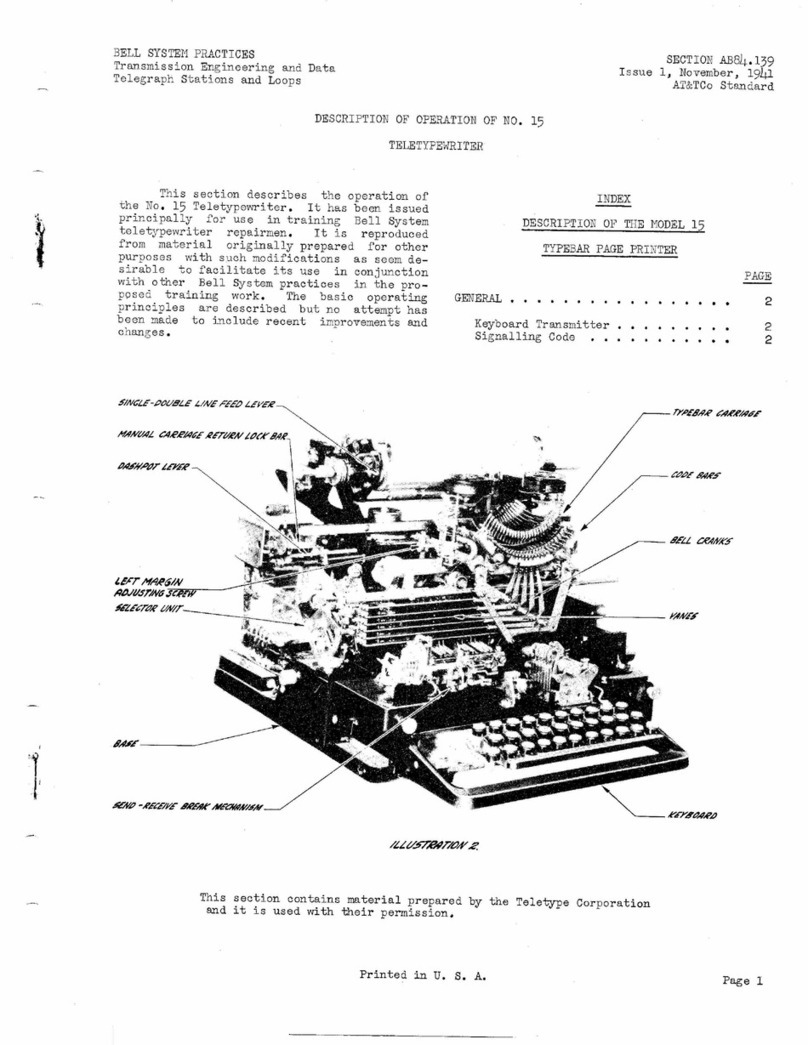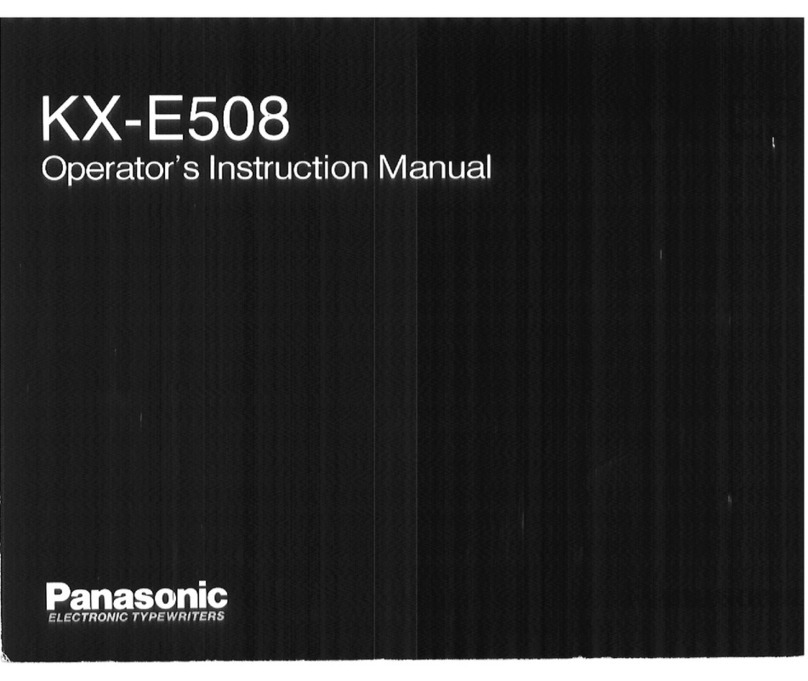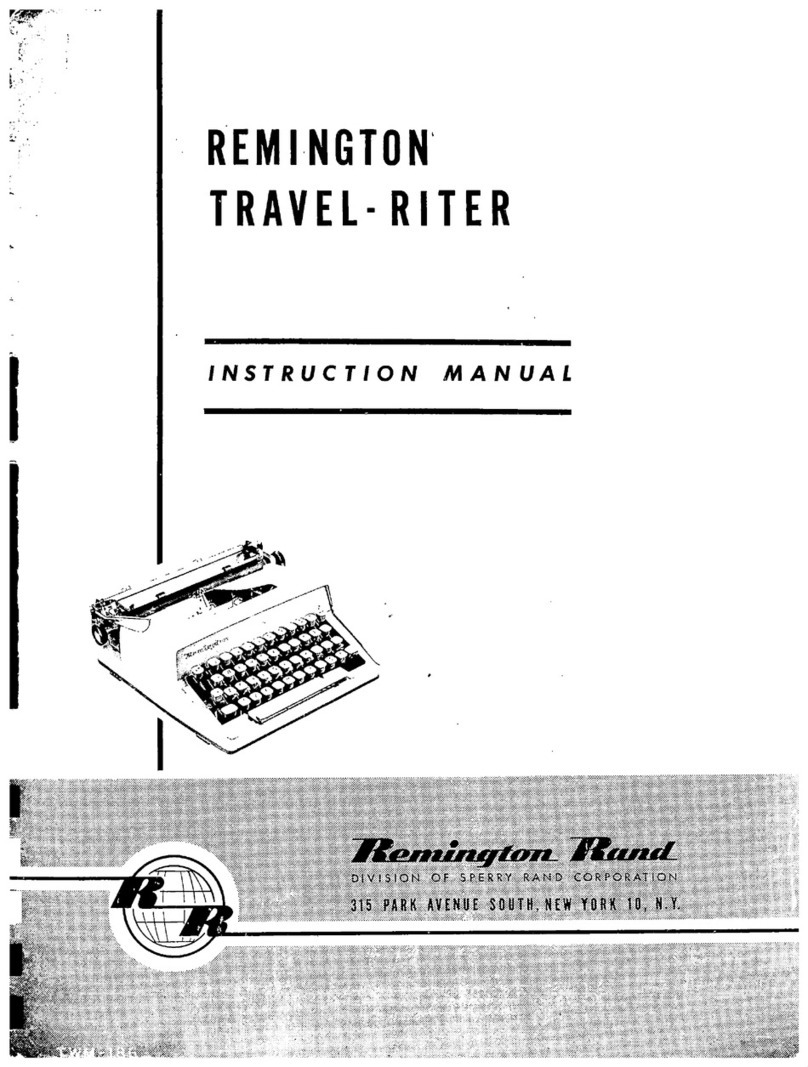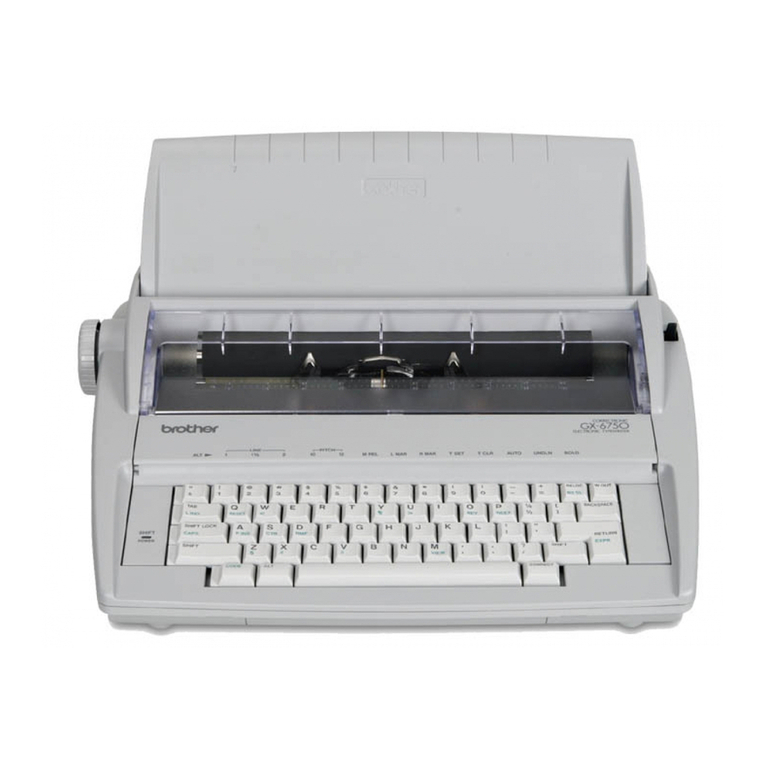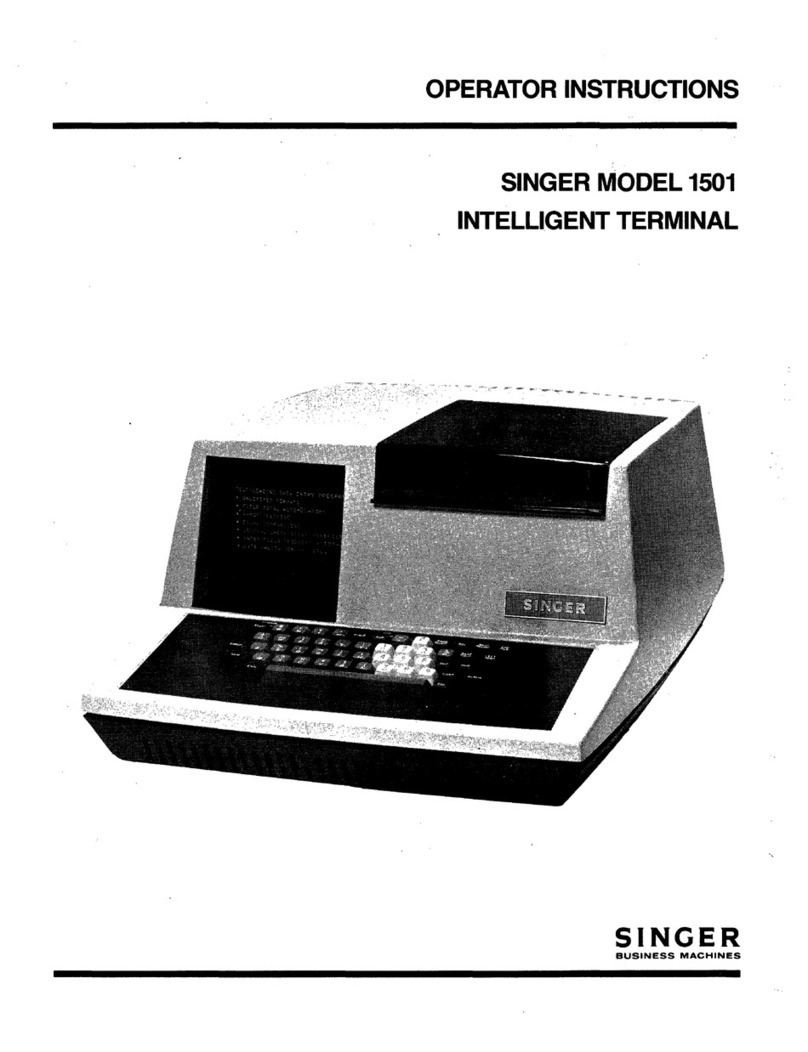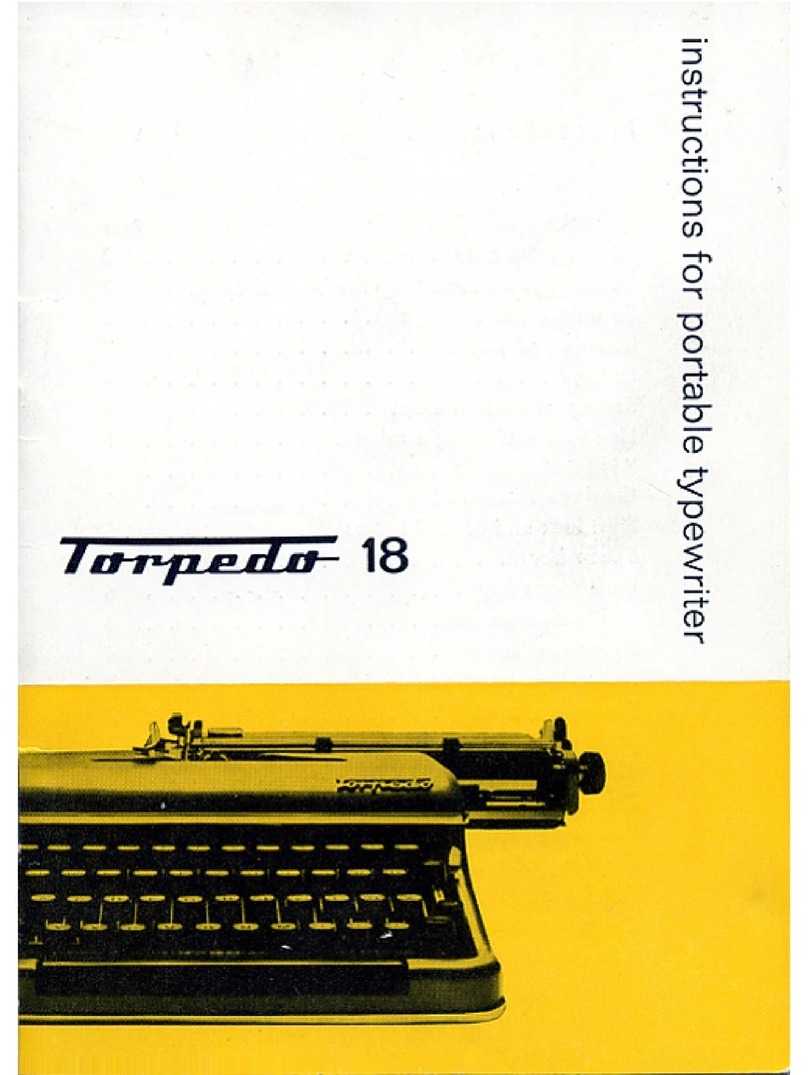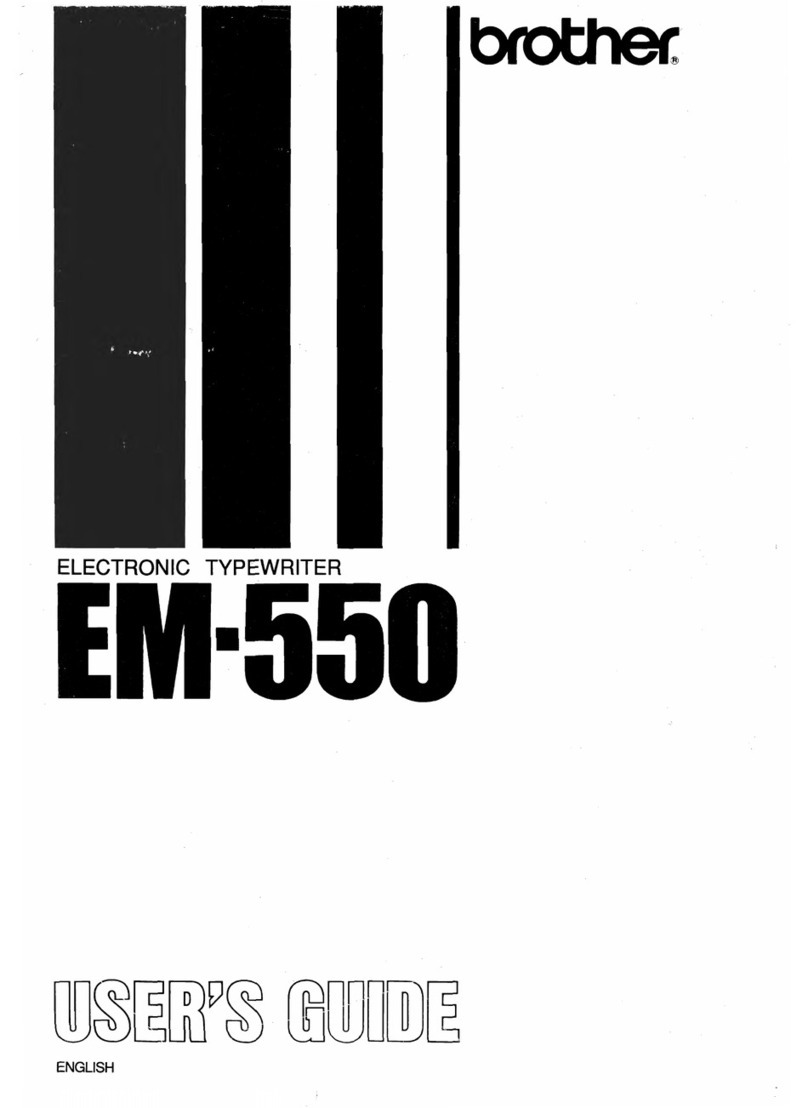
cam,
and the trip lever (Fig. 15).
The cam consists
of
a steel body with nylon molded
at
the
bear-
ing
point,
the
tai
I, and the shoe
that
contacts' the power
roll.
The cam
is
mounted to the cam lever by means
of
a shoulder
rivet.
It
is
free to
rotate
about the
rivet,
but the amount
of
rotation
is
limited
in
one direction by a steel stop which
pro-
jects
from
the
cam.
The stop contacts the side
of
the cam lever
and determines the rest position
of
the cam (Fig. 15). A cam
spring extends between a hook on
the
cam lever and a hook on
the cam and holds the cam
in
its rest position. The heel
of
the
nylon shoe contacts the cam lever when the cam
is
fully rotated
and limits rotation
in
this
direction.
Earlier steel bodied cams
did not have steel stops. The nylon heel
of
the cam was larger
and served as a cam stop
in
both
directions
of cam
rotation.
The st.eel stop was incorporated
to
minimize cam bounce when
the cam returned to its rest position.
The trip lever
is
mounted to the cam lever
by
a shoulder rivet
(Fig. 15).
An
elongated slot
in
the trip lever allows
it
to slide
front
to
rear
to
rotate around the
rivet.
A hook
on
the trip
lever mounts a sprint
that
extends to a hook on the cam
lever.
The tri I lever springs holds the trip lever
up
and to the rear
in
its rest position. The trip lever has two formed lugs. The top
lug
is
positioned
directly
under the lug on the key
lever.
The
boftom lug
is
directly
above the
cam.
Impression Control Indicator
Figure
10.
Cam
Knockout
Bar
Assembly
The cam knockout bor assembly
is
an aluminum casting
to
which
two sets
of
flat knockout spring fingers are secured (Fig. 10).
There
is
one knockout finger for
each
cam lever assembly. The
height of
each
knockout finger, is controlled by individual
impression control screws which are located
in
the knockout bar
below the fingers. The knockout bar assembly pivots between
the left and right side frames on two pins
that
are
secured
by
set screws.
An
impression control
eccentric
shaft
is
positioned
beneath the
rear
of
the knockout bor and pivots in two bronze
bearings which
are
mounted to the left and right side frames
(Fig.
10). A plastic
gear
is
pinned
to
the left end
of
the shaft
and
meshes with the
teeth
on the impression control
indicator.
The impression control indicator pivots
on
a stud on the left
side frame. The rear
of
the
knockout bar
is
held down against
the impression control
eccentric
shaft
by
two springs.
4
Type
Bars
Type bars
are
mounted in a slotted segment
and
are
held by a
curved type bar fulcrum wire (Fig. 11). The lower end
of
the
type bor extends below the segment and has a hole in
it
for
the type bar link. Above the segment
is
the body
of
the
bar,
identified by
the
reinforcing
rib,
and the type head which
includes the type slug and
the
wider section
of
the bar
(Fig.
12). The part referred to as the throat extends
from
the
top
of
the reinforcing rib to the bottom
of
the
head.
A type mark,
used to identify the type
style,
is
located between the upper
and lower case type faces on the type slug.
An
anticlash
I
ug
prevents damage
to
the type face if one type bar
fo
Ilows
another to the
platen
before the first bar has gotten out
of
the
way.
The type face
is
curved
to
the same arc as the platen
so
that
all parts
of
the type face will strike
evenly.
A hole
is
provided
in
the
type head
to
facilitate
forming
of
the
head
during type alignment. A locater lug found on some type
styles
is
used
at
the factory
to
facilitate
soldering
of
the type
slug to the
bar.
Fulcrum
Wire
Ret.aining
Screws
Figure
11.
Type
Bar
Mounting
Changable type bars
are
available
to permit the operator
to
interchange type bars in specified positions, thus providing
a
greater
number
of
special
characters (Fig. 13). This feature
is
available
only
for positions
0,
32,36,
39,
40,
41,
42, 43,
and
the standard numerical type bar positions.
Changeable
type bars ore not porvided for
alphabetic
positions
or
position
#38. A special type bor link incorporating a spring
clip
is
.
used with changable type bars. This link will not drop
off
the
cain lever when
the
operator removes a type bar and drops
the.
link.
Each changable type bar is designated for one type bar
posi-
tion
only
and
is
to
be aligned
to
the
typewriter for which
it
